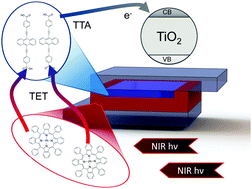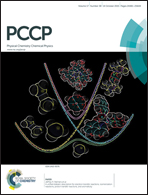An intermediate band dye-sensitised solar cell using triplet–triplet annihilation†
Abstract
A new mechanism of charge photogeneration is demonstrated for the first time, based on organic molecular structures. This intermediate band approach, integrated into a dye-sensitised solar cell configuration is shown to generate charges upon illumination with low energy photons. Specifically 610 nm photoexcitation of Pt porphyrins, through a series of energy transfer steps and triplet–triplet annihilation, excites a higher energy absorption onset molecule, which is then capable of charge injection into TiO2. Transient absorption measurements reveal further detail of the processes involved.


 Please wait while we load your content...
Please wait while we load your content...